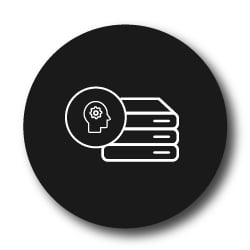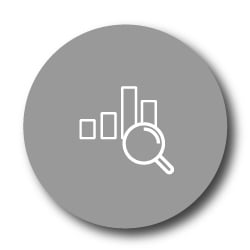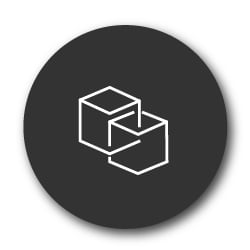If you work in retail and are serious about your long-term success, investing in data cube software isn’t so much a recommendation as it is a must-have. There are many good reasons as to why we say that. And we explain all these reasons below. For now, it’s worth pointing out that with data cube software, you can extract, process and query your retail data.

You can’t begin with category management without first understanding your data
If you’ve read any of our previous articles on category management, you’ll know that we’ve mentioned the importance of first consulting your retail data. That’s because of the power of it.
Your retail data lays a solid foundation for effective category management. Without this data to reference, your efforts become less efficient. So where does data cube software come in?
Simple: a data cube is a multi-dimensional array of values used to understand data that is too complex to be understood or interpreted by a table of columns. It’s the data stored within your cube that holds vital answers and can assist you to make better category management decisions around your retail business.
However, without setting up any data cubes, you are limited in your ability to draw a meaningful set of data from your database for reporting. We’ll touch on the reporting side later on in this article. Suffice to say; if you can’t extract information, you lack the means to make good business decisions.
Let’s say, for example; you want to find out more about your average sales for a category year-on-year. By looking at your data and analysing what’s happening, you might find that your sales are less than expected for your chosen period. You might also find that your unit movement is down too.
With this information at your fingertips, you can pinpoint the category management actions you need to take to correct your mistakes. Without knowing, you might carry on as usual and not understand why your sales and profits are down.
Data cubes make up a critical part of custom reporting
We have already established that a data cube consists of any retail data that you, the user, decide to use. It’s also important to note that your data cubes play a critical role in custom reporting as they act as a source of information.
Let’s say that you want to build a custom report in DotActiv.
You can use any selection of data visualisations found in our software and build it without relying on help from your IT department. You can compare current planograms to proposed planograms, for example. And, once you've saved your report, you can share it amongst your team and other DotActiv users.
Of course, before you begin building any report, you first need to ensure that you set up a data cube, connect it to your chosen source, be that a database, CSV or planogram, add all the necessary fields, add your filters as well as a period and then run the data cube to populate it.
Let’s say that you do that. You have configured your data cube to hold Market, Product and Sales data for a particular category at a range of stores and you’ve set it to pull the last six months of data. You’ve also run and saved it for future access.
You can now easily configure your report with a graph to show the average sales per category and per period across the last six months by selecting the data cube as your source.

You can analyse all sorts of information about your retail business
With a data cube, you can analyse just about any information for your retail business. As already mentioned, it's up to you to choose the business data that you'd like to analyse.
For context, let’s consider the various dimensions that make up the average data cube in DotActiv. There are four dimensions: Markets, Products, Facts, and Periods.
Under the Markets dimensions, you can select category format, cluster detail, geographical location, store detail and more. Selecting any one of these values allows you to delve further into your data.
Let’s consider category format. If you’ve chosen your database as your source, selecting this value allows you to choose any category found in it and add it to your data cube for reporting.
Under the Products dimension, you could analyse your display structure, product attributes, item detail, retailer hierarchy and so on. By selecting your display structure, for example, you can choose to include (or exclude) your Merchandising Group, Department, Category, Sub-Category and Segment.
Then, for your Facts dimension, you could look at your various indicators, retail, space planning, stock fields. Choosing ‘Retail’, you can include Sales at Cost, Sales at Sell, Sales Quantity, Unit Cost, Unit Price and more, depending on your requirements.
That said, while you can pull information from all four dimensions, that doesn’t mean you need to use them all to obtain the information you want. You could, ignore the Markets dimensions altogether and only pull your sales per product category.
In that way, the data cube is as flexible as you want it to be, thereby offering your business intelligence that you can act upon to make better decisions.

Data cubes make it easier for you to work with your database
If you want to analyse data across your retail stores, one of your best options is to use a data cube. After all, a cube contains less information than your entire database. That means it's faster to work with and ensures you are more efficient.
With the setup dialog in DotActiv, for example, you can configure which dimensions and fields you want to include in your custom report. You can add filters to further refine your results so that you only work with the information that you want.
Let’s say we want to only see sales information for a category at a specific store over the last six months.
After populating our data cube, we then begin filtering what we want by first selecting the Markets under dimension, Store Detail under section, Store Name under Field Name and then choose your store. For the next filter, we’d add Product under dimension, Retail Hierarchy under section, Category under Field name and then choose the category. Finally, we’d add the period.
You can also setup your cubes in a way that they refresh monthly so that you have the latest data on hand for easy reporting. At the beginning of each month, you could refresh your report with all the latest sales data and send it to the relevant stakeholders.
Now, compare that with the other route where you decide to pull all information from your database without first deciding what you want in your report. Not only will you end up overwhelmed with all this information, but it will also be useless because you haven’t set any parameters.
How are you supposed to report on your data effectively if you don’t first set any specifications?

With data cubes, you can establish trends and analyse your performance
The fact that you can filter through your entire database and select only the information that you need means you have every opportunity to spot trends and analyse your performance.
Of course, all stored data within your database must be correct if you want to report from your database. By setting your data aggregation and fields correctly, you can then report on your data with easy to understand graphs that will highlight your performance trends.
Fortunately, with software such as DotActiv, once you’ve created and run a cube, you have a variety of reports that help you to analyse your data within. Please note, you can only access these reports when connected to your database.
For example, there is the Demand Report, which shows the impact of changing facings on a proposed planogram when compared to a current planogram. With it, you can understand the value of additional stock required to fill your planogram.
There is the Availability Report, which summarises the stock availability by store based on a category. It’s especially helpful for your forecasting and replenishment teams based at your stores.
There is the Product Performance Report, which provides a summary of changes on a current versus proposed planogram. You can run it either as a summary or by sub-category or by brand.
Other reports include the Cross Merchandising Report, which can assist your buyers with forecasting and understanding where to merchandise products for better sales. And the Clustering and Ranging Report, which summarises current versus proposed clusters and ranges.
Conclusion
DotActiv Lite, Pro, and Enterprise are all different versions of our category management software that allows you to drive category performance. All three editions come standard with access the Standard Planogram Reporting Functions. You can visit our online store and try any of our editions for free, for 14 days.



